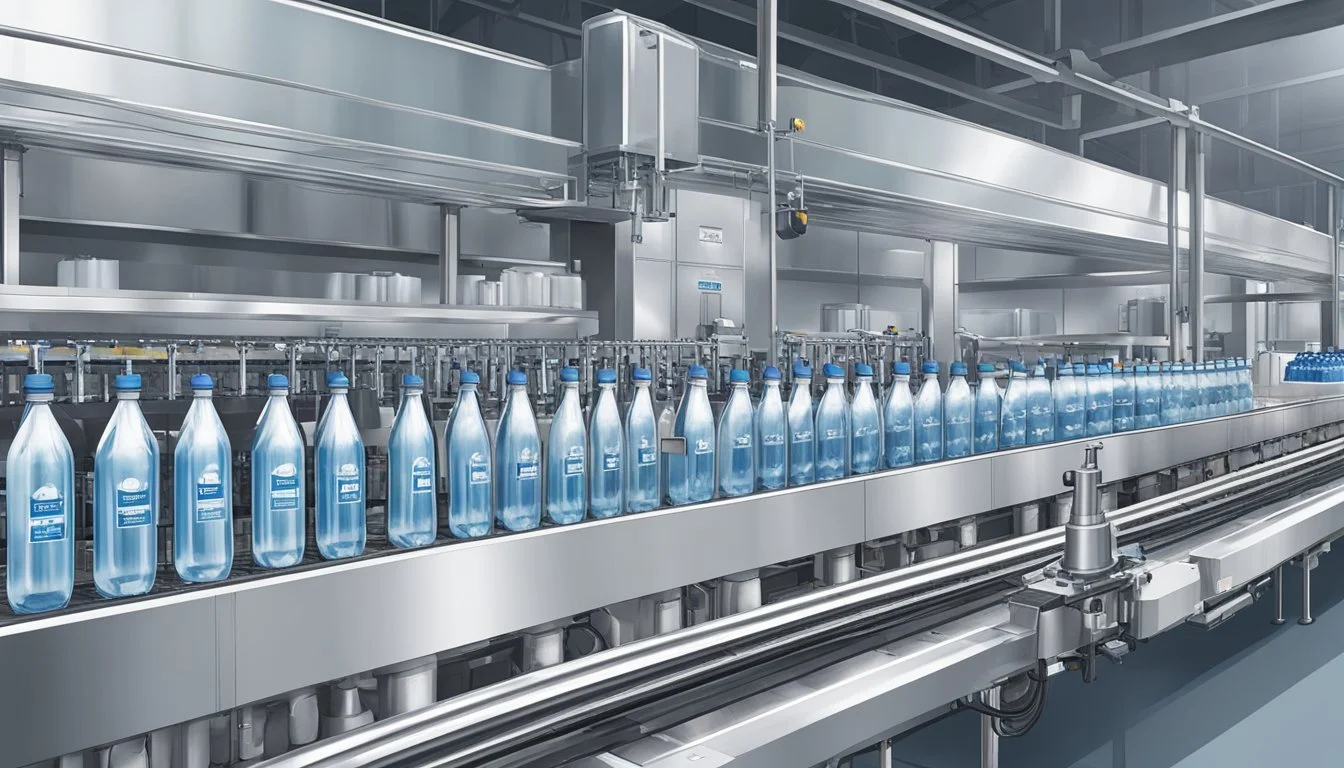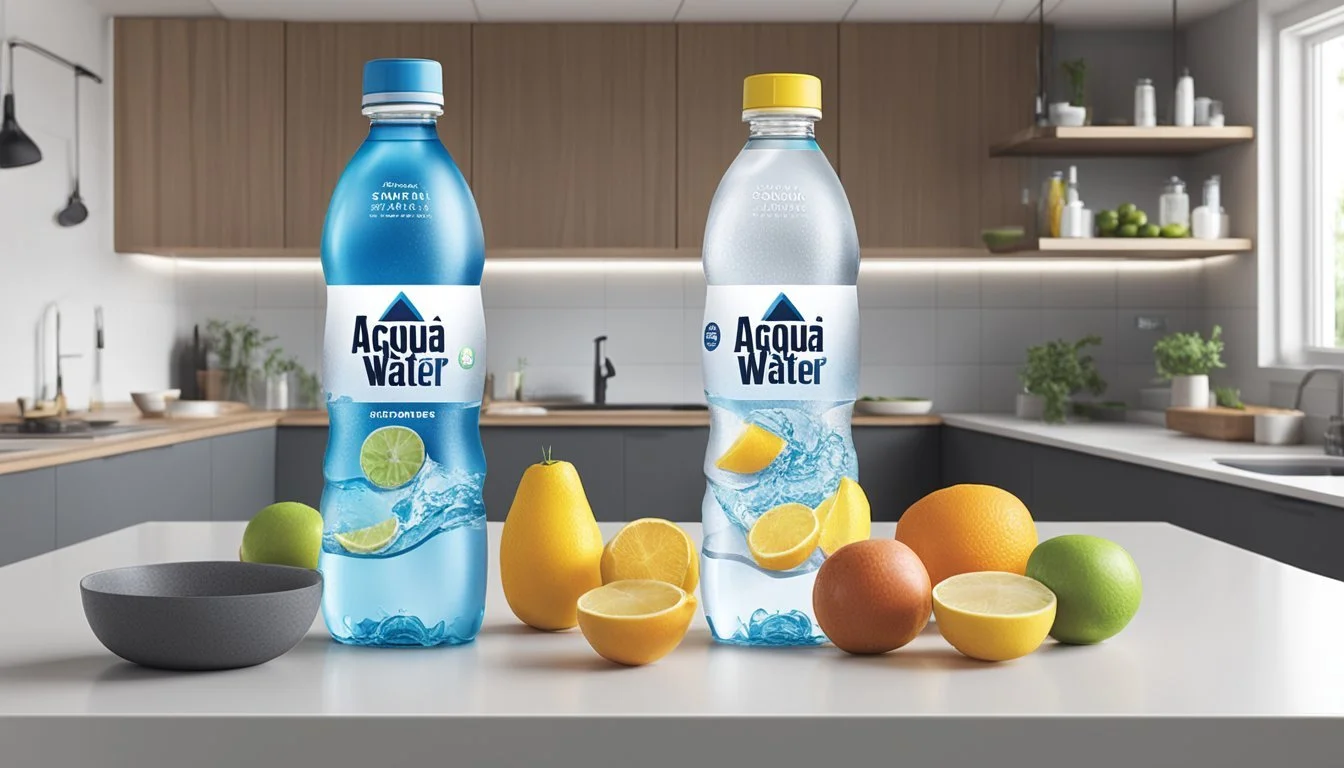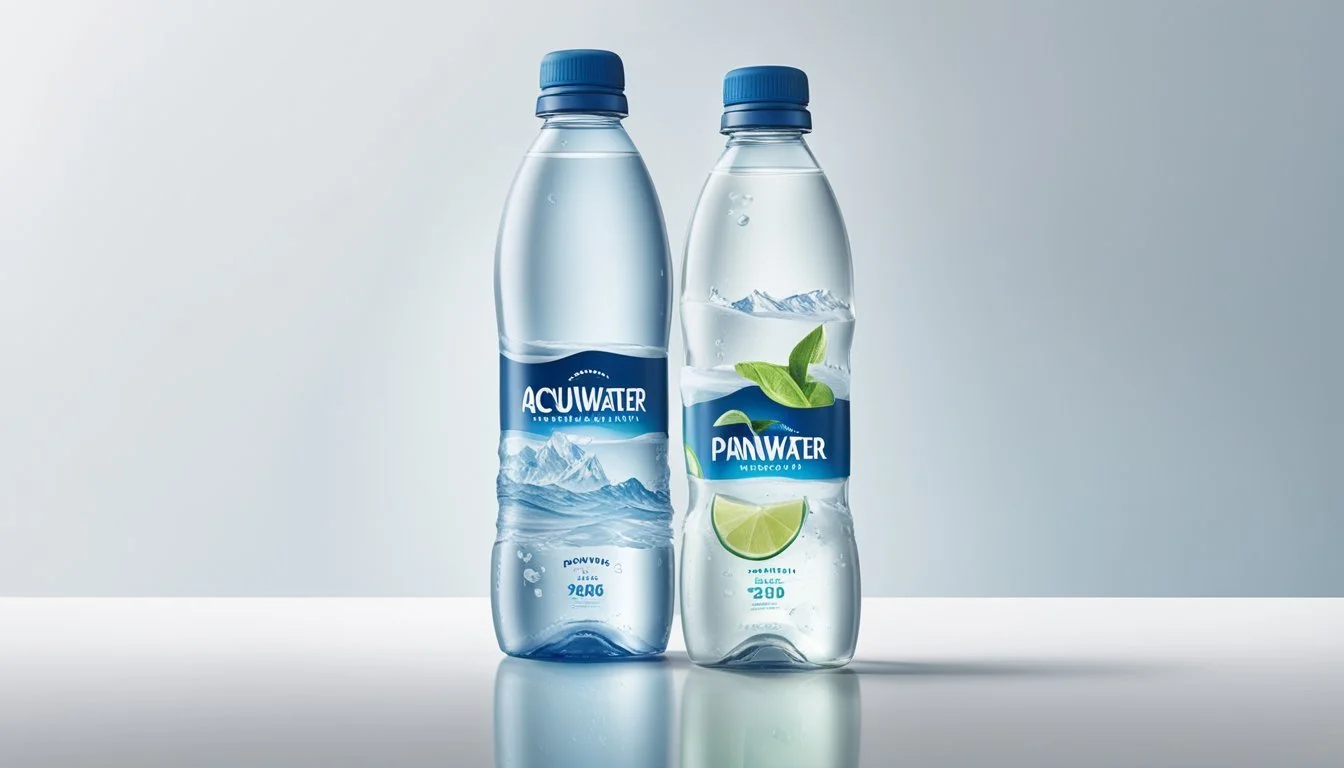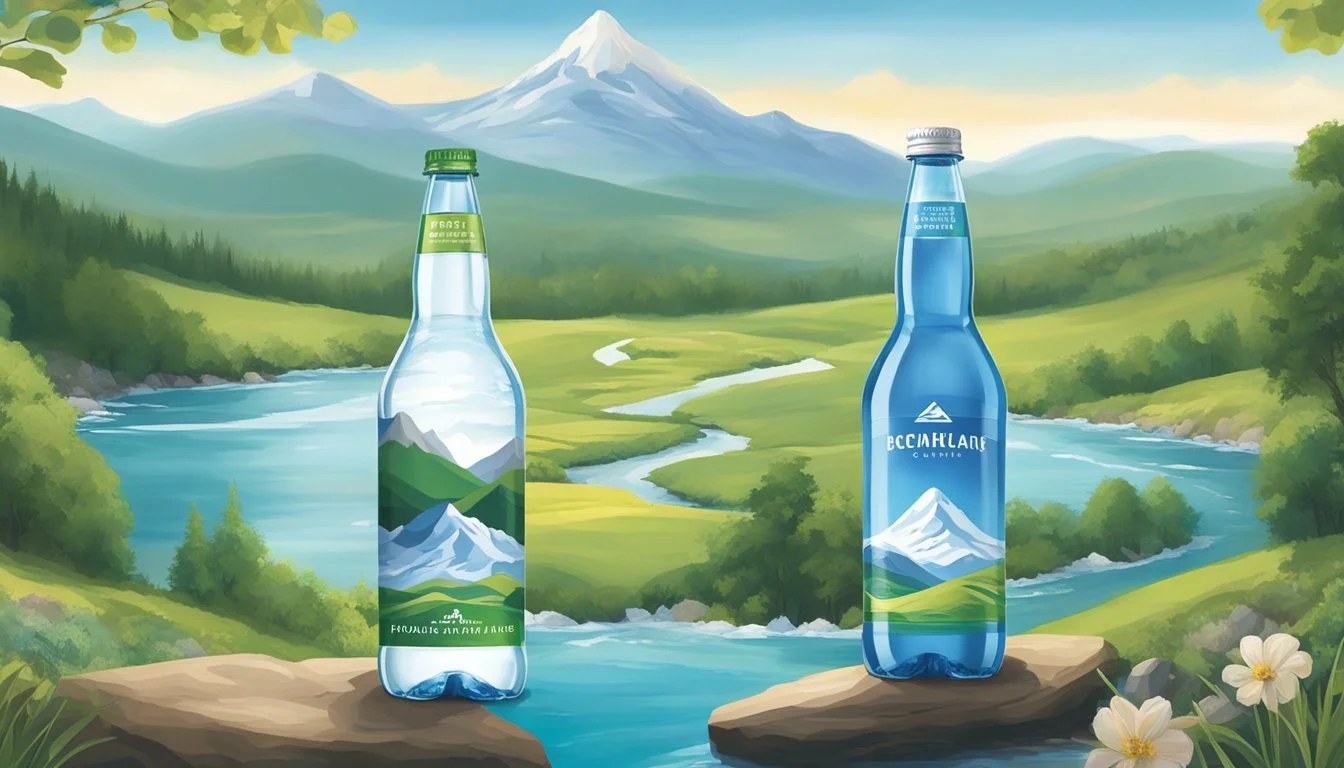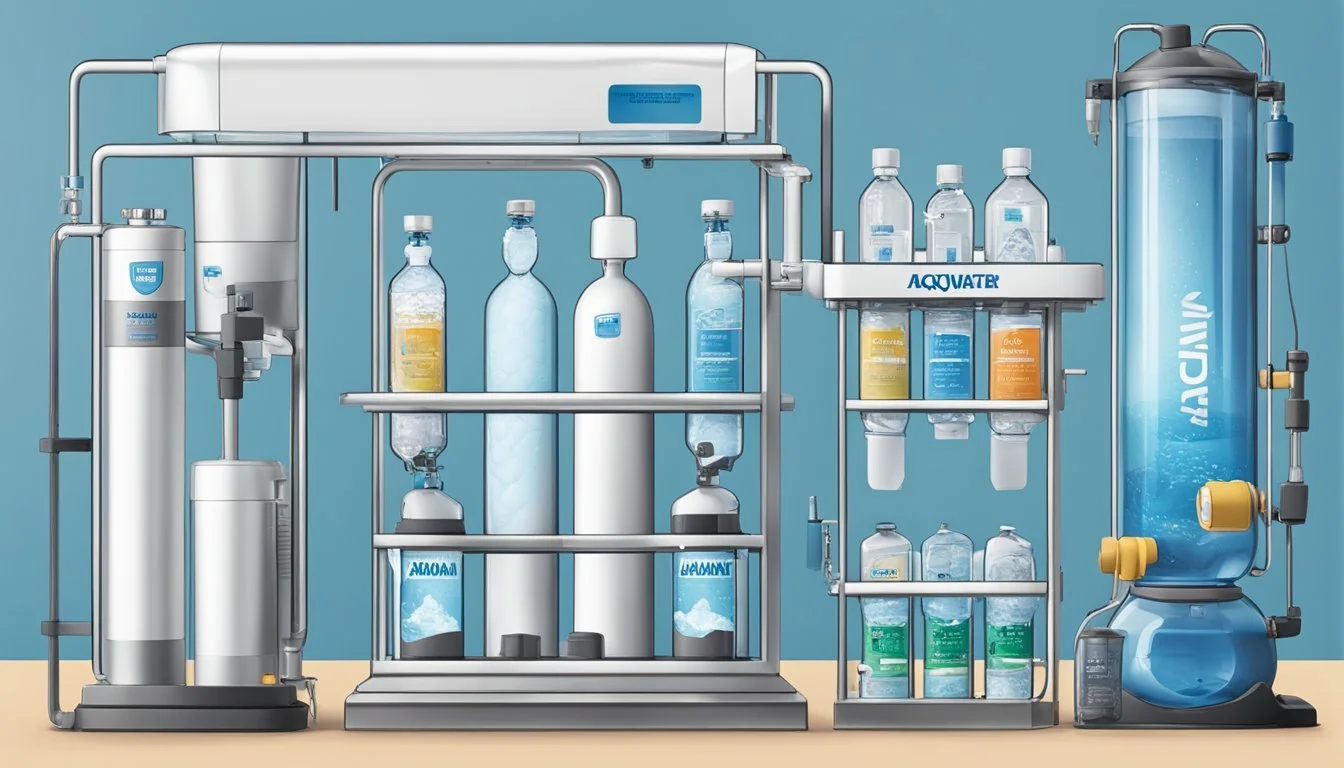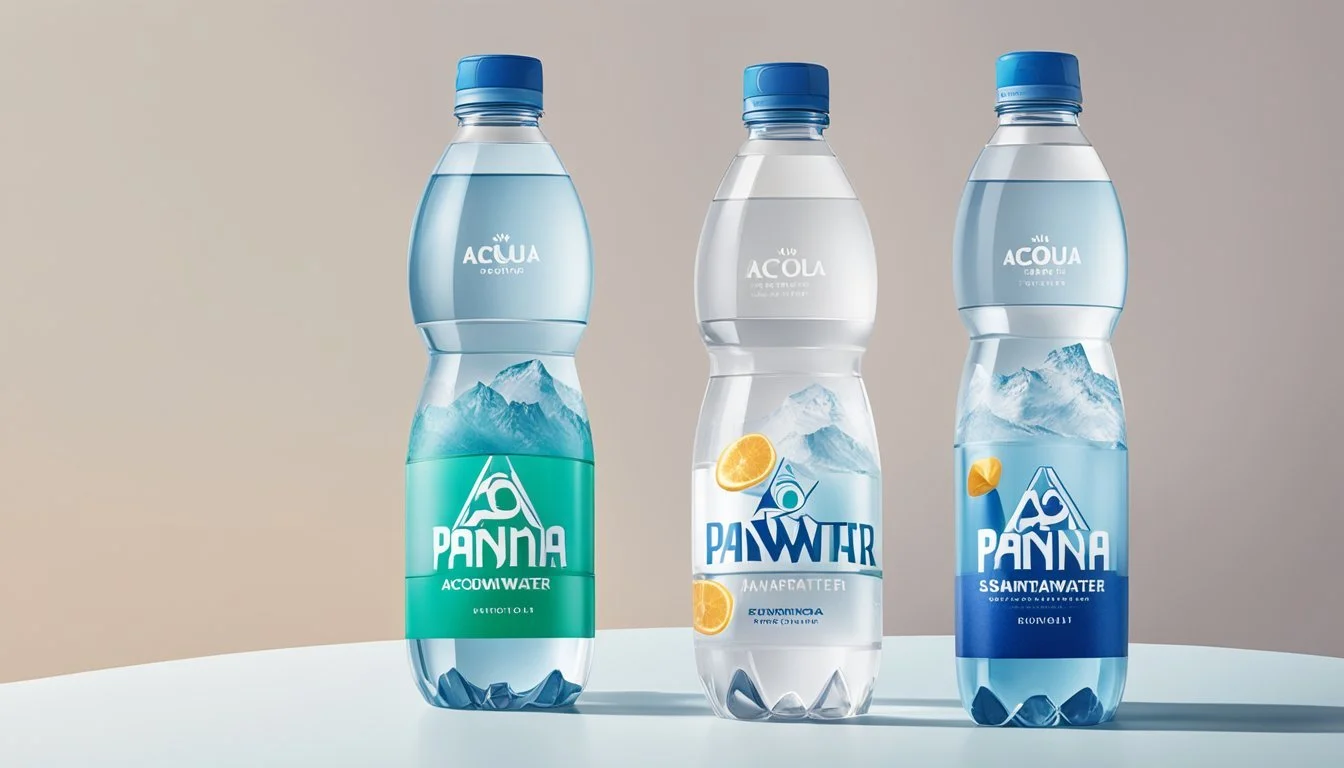Acqua Panna vs. Smartwater
Comparing Quality and Taste in Bottled Waters
In the market of bottled waters, Acqua Panna and Smartwater stand out as premium choices, each brand vying for the favor of consumers seeking not just hydration but also a particular quality and taste experience. Acqua Panna, hailing from Italy, is known for its smooth taste and natural alkalinity, boasting a pH balance of 8.5. This Tuscany-sourced water prides itself on a heritage of quality and sophistication, promising a distinct taste that comes from its journey through the sun-drenched hills of Italy.
Smartwater, on the other hand, takes a different approach. Produced by distillation, it mirrors the process of the hydrologic cycle, incorporating electrolytes for a crisp taste. This method is designed to offer purity and an electrolyte-enhanced composition, which has found favor among consumers, particularly in fitness and wellness circles. Smartwater also brings to the table a modern brand image, aligning with a consumer base that values both the functional and aesthetic aspects of hydration.
The debate over which bottled water is superior revolves around not only the palate but also the perceived benefits and brand affiliations. With each brand offering a unique selling point, from Acqua Panna's natural source to Smartwater's technological purification process, consumers are faced with a choice that goes beyond mere thirst-quenching to include considerations of taste, purity, and brand ethos.
History and Origin of Bottled Waters
The history and origin of bottled waters like Acqua Panna and Smartwater are steeped in both rich cultural heritage and modern technological innovation. Understanding their backgrounds provides insight into how these brands have developed their reputations for quality.
Acqua Panna: Italian Heritage
Acqua Panna sources its water from a natural spring located in Tuscany, Italy. This region is renowned for its pristine landscapes and quality produce. The brand's heritage dates back to 1880, when the water was first bottled at the source near Villa Panna. The spring, known for its purity, is situated in the heart of the Tuscan hills, which contributes greatly to the water's mineral composition and taste profile. Acqua Panna prides itself on being the pioneer of still (uncarbonated) bottled water in Italy, celebrating a long-standing tradition of providing natural spring water.
Smartwater: Technological Innovation
On the other hand, Smartwater originates from vapor distilled municipal water sources, primarily in California. The brand employs a method that mimics the hydrologic cycle, a process where water is evaporated and then condensed to remove impurities. Introduced to the market in the 1990s, Smartwater is a testament to innovation in water purification. It also adds a blend of electrolytes for taste enhancement. The technology behind Smartwater represents a bold stride in combining science with hydration to offer a consistent product in regions where natural spring water may not be readily accessible.
Production Processes
When comparing Acqua Panna with Smartwater, one should consider the distinctive methods each brand uses to produce its bottled water. Both brands aim to deliver purity and taste, but their processes diverge significantly.
Natural Spring vs. Vapor Distillation
Acqua Panna sources its water from a natural spring in Tuscany, Italy, where the water is naturally filtered through limestone hills before being collected. This mineral-rich water reflects the geography of its origin and its journey through the earth. Acqua Panna does not typically undergo reverse osmosis; instead, it is often described as "mineral water" due to the presence of various minerals it acquires naturally.
In contrast, Smartwater undergoes a production process known as vapor distillation. This method mimics the natural hydrologic cycle where water is heated to create vapor, then cooled to remove impurities, and condensed back into liquid form. Additionally, Smartwater applies reverse osmosis, which forces water through a semi-permeable membrane to further reduce impurities.
Adding Minerals and Electrolytes
After the distillation process, Smartwater reintroduces electrolytes such as potassium, calcium, and magnesium for added benefits and to enhance taste. These electrolytes are deliberately added to the water to create Smartwater's distinct crisp and clean flavor profile.
Acqua Panna, primarily known as a natural spring water, boasts a composition rich in minerals naturally acquired from its underground journey. It doesn't require the addition of electrolytes or minerals, as it is already mineral-infused from its source, providing a smooth taste inherent to the region.
Taste and Purity Evaluation
When considering bottled water, two critical aspects are the flavor profile and the purity of the product. In the evaluation of Acqua Panna and Smartwater, one must consider both the distinctive tastes and the levels of contaminants with reference to safety standards.
Flavor Profiles of Acqua Panna and Smartwater
Acqua Panna is sourced from natural springs in Tuscany, Italy, and exhibits a pH of 8.0, indicating its alkalinity. This brand is noted for its smooth taste and unique mineral content, which contribute to its full-bodied flavor that is often compared to other high-end natural spring waters.
Smartwater, on the other hand, is distinguished by its vapor distillation process with added electrolytes. This results in a crisp taste that appeals to those seeking a clean and pure water taste, somewhat reminiscent of the freshness after a rainstorm.
Contaminant Levels and Safety Standards
When examining purity, a key concern is the presence of heavy metals and chloride. Both Acqua Panna and Smartwater adhere strictly to regulatory standards ensuring their safety for consumption.
Acqua Panna: Known for its natural filtration process, it typically shows low levels of contaminants.
Smartwater: Its vapor distillation approach ensures that impurities are removed efficiently.
Comparative Analysis of Water Sommeliers
Water sommeliers—a niche profession—conduct comprehensive evaluations of bottled waters, where both the taste and purity are intricately scrutinized. Their analyses often reveal subtle nuances in water brands that may not be apparent to the average consumer.
Acqua Panna receives commendations for its natural minerals and favorable mouthfeel.
Smartwater typically earns praise for consistency and a notably clean profile.
These expert opinions are instrumental in painting a picture of the overall quality of bottled waters like Acqua Panna and Smartwater.
Health and Hydration
When comparing Acqua Panna and Smartwater, one must consider their contributions to health and hydration. They both serve the fundamental purpose of keeping the body hydrated, but they differ in mineral content and the resultant health benefits.
Acqua Panna:
Source: Tuscany, Italy
Known for its natural alkalinity with a pH level of about 8.0
Contains essential minerals like calcium and magnesium which are vital for bone health and metabolic functions
Calcium and Magnesium Content:
Mineral Acqua Panna (mg/L) Smartwater (mg/L) Calcium 6.4-10 Variable* Magnesium 1.1-2.4 Variable*
*Smartwater is vapor-distilled, and minerals are added for taste, quantities may vary.
Smartwater:
Produced by vapor distillation, with added electrolytes for taste
Designed to mimic the natural purification process of the water cycle
The added electrolytes like calcium chloride and magnesium chloride enhance taste and improve hydration
Both brands contain bicarbonate, which can help maintain the body's pH balance. It acts as a buffer against acidic and alkaline imbalances.
Bicarbonate Acqua Panna (mg/L) Smartwater (mg/L) Bicarbonate 104 Variable*
Hydration efficiency can be influenced by the presence of minerals such as calcium and magnesium. While both waters provide these essential minerals, the quantities and natural presence differ, which can impact absorption and hydration.
In summary, both Acqua Panna and Smartwater offer hydration benefits with added essential minerals, with a focus on different attributes: Acqua Panna for its natural alkalinity and mineral presence, and Smartwater for its purity and electrolyte enhancement.
Environmental Impact and Sustainability
When assessing the environmental impact and sustainability of bottled water brands like Acqua Panna and Smartwater, it's crucial to consider their global sustainability practices and packaging materials. These factors directly contribute to each brand's ecological footprint.
Bottled Water and Global Sustainability
The production and distribution of bottled water have significant environmental implications. Acqua Panna, sourced from Tuscany, Italy, touts its pristine sources and natural filtration. However, the brand's efforts toward sustainability are crucial. Acqua Panna has committed to becoming carbon neutral by 2022, aiming to reduce its carbon footprint from sourcing to distribution.
On the other hand, Smartwater, known for its vapor-distilled sparkling water, also addresses sustainability. As a brand under the Coca-Cola umbrella, Smartwater benefits from the company's global goals to replenish water and reduce carbon emissions. Smartwater's commitment to sustainability includes efforts to ensure water used in production processes is restored to nature.
Packaging: Plastic vs. Glass and Other Materials
The choice of packaging material is a primary concern for sustainability-minded consumers.
Acqua Panna:
Glass bottles: Traditionally packaged in its unique green glass bottle, which consumers often consider more environmentally friendly due to its reusability and easier recyclability.
Smartwater:
Plastic bottles: Primarily uses plastic packaging, which raises concerns due to its contribution to pollution and the challenges of recycling. The brand, however, has been exploring more sustainable packaging solutions.
Packaging decisions are not just about material but also the energy used in production, transportation, and recycling processes. Hence, choosing glass may favor recycling efficacy, while plastic may benefit from reduced transportation emissions due to its lighter weight. Both Acqua Panna and Smartwater must navigate these trade-offs to enhance their sustainability initiatives.
Consumer Convenience and Lifestyle
When it comes to water brands like Acqua Panna and Smartwater, consumers often consider the ease of access and how the product complements their dining experiences.
Availability: Accessibility in Restaurants and Stores
Acqua Panna is known for its presence in fine dining restaurants and select grocery stores, emphasizing quality over mass-market presence. Consumers might find it more commonly in Italian restaurants, especially those that are high-end, making it part of an authentic culinary experience alongside well-curated pasta dishes. On the other hand, Smartwater is widely available and can be found in a vast array of venues from convenience stores to vending machines, making it a go-to option for everyday hydration needs.
Acqua Panna:
Fine dining restaurants: Common
Grocery stores: Selective
Smartwater:
Convenience stores: Common
Vending machines: Common
The Role of Water in Culinary Experience
The choice of water can be a subtle yet significant aspect of a dining experience. Acqua Panna, with a taste that's often described as smooth and unobtrusive, is typically chosen to complement delicate flavors of dishes such as pasta without overpowering them. Smartwater, known for its electrolyte enhancement for taste, provides a clean and crisp palate cleanser that pairs well with a variety of foods.
Acqua Panna: Preferred for complementing fine dishes
Smartwater: Versatile, pairs with various meals
Market Presence and Brand Comparisons
Evaluating the market presence and brand comparisons between Acqua Panna and Smartwater involves considering consumer opinions and how these brands stack up against other contenders in the bottled water industry.
Consumer Perception and Awards
Acqua Panna is often regarded for its taste and quality, springing from the Italian hills of Tuscany and gaining acclaim for its smooth flavor. Its parent company, San Pellegrino, has positioned it as a premium water choice. It engages with its audience through a narrative of heritage and natural origin. On the other hand, Glaceau Smartwater, owned by Coca-Cola, offers distilled water with added electrolytes, marketing itself with contemporary branding that resonates with health-conscious consumers. Smartwater has also been distinguished for its sleek packaging design.
Competitors and Alternatives in the Market
In the highly competitive bottled water market, Acqua Panna and Smartwater encounter numerous alternatives, each brand carving its niche through various attributes.
Evian and Fiji present themselves as direct competitors with their natural spring water offerings.
Essentia markets its ionized alkaline water, targeting consumers interested in its purported hydration benefits.
VOSS, known for its artesian water from Norway, competes fiercely on the basis of its minimalist design and brand prestige.
Low-cost alternatives like Dasani and Aquafina, backed by beverage giants Coca-Cola and PepsiCo respectively, attract price-sensitive customers.
LIFEWTR and Pure Life deliver purified waters to those preferring a more refined and processed option.
Fans of carbonation have choices like Perrier and San Pellegrino.
These products stand alongside various sparkling waters, flavored offerings, and boxed water alternatives, each seeking to appeal to different segments of the market with their unique selling points.
Regulation and Safety
When considering bottled water options such as Acqua Panna and Smartwater, it's important to assess the regulation and safety measures. These factors are vital to ensure that the products meet the highest standards for consumer health and quality assurance.
Bottling Standards and EPA Guidelines
The U.S. Environmental Protection Agency (EPA) oversees the national regulations for tap water, while the Food and Drug Administration (FDA) regulates bottled water. The FDA mandates that bottled water must meet equivalent safety standards to EPA regulations for tap water. This means that companies like Acqua Panna and Smartwater undergo stringent testing for contaminants, including adherence to limits on specific substances such as lead, a notable concern from the Flint water crisis.
Lead: Maximum Contaminant Level Goal set to zero by EPA
CO2 Levels: Regulated for consistent carbonation in bottled sparkling waters
Bottled water brands ensure their products are free from contaminants and adhere to the Safe Drinking Water Act (SDWA) guidelines, which involve analysis of the source water and frequent testing of the final product.
International Water Quality and Taste Awards
At the annual Berkeley Springs International Water Tasting, judges assess various bottled waters based on criteria including flavor, mouthfeel, and purity. Water brands, including Acqua Panna, often compete for such accolades, which can influence consumer perception and highlight water quality. Any awards or recognition they receive can serve as a testament to their compliance with international quality standards and excellence in taste.
Berkeley Springs Awards: An indicator of exceptional water taste and quality
Taste Attributes: Evaluated include appearance, aroma, taste, aftertaste, and mouthfeel
These international competitions promote a focus on excellence within the bottled water industry, encouraging companies to strive for superior taste while maintaining the safety and quality of their products.
Cultural and Regional Significance
Acqua Panna and Smartwater originate from geographically and culturally rich regions that hold significant importance in their respective localities.
Acqua Panna: This Italian brand hails from Tuscany, a region renowned for its art, history, and natural beauty. Acquiring its essence from the serene Apennines, the waters of Acqua Panna take a 13-year journey through the underground aquifer, emerging pure and untouched. The brand carries a certain prestige that is reflective of the Tuscan heritage, extending from the renaissance culture to the tranquility of its landscapes.
Smartwater: In contrast, Smartwater is vapor-distilled, drawing inspiration from the natural water cycle. The brand does not emphasize a specific natural source comparable to historic regions like Tuscany. However, the association of Smartwater with technology and purity sits well with a modern audience looking for sophistication in everyday consumption.
Acqua Panna Smartwater Source Region Tuscany, Italy Not region-specific; vapor-distilled Cultural Significance Reflects the historical and natural beauty of the Tuscan landscape Emphasizes modernity and technological purification processes
Whereas Acqua Panna is steeped in regional Italian culture, Smartwater adopts a more universal appeal that focuses on the process rather than the place. Neither brand specifically connects to notable locations such as the French Alps, volcanoes, the Ouachita Mountains, or the Mauna Loa volcano, which are often associated with other brands and have their unique significances. Acqua Panna's regional identity juxtaposes with Smartwater's appeal to a forward-thinking consumer base, giving each brand its cultural narrative.
Advancements in Water Filtration and Enhancement
Technological progress in the water filtration industry has paved the way for brands like Acqua Panna and Smartwater to provide consumers with enhanced bottled water options. Acqua Panna sources its water from the springs in Tuscany, and while the region isn't known for volcanic activity, the natural filtration process through limestone hills contributes to the water's mineral composition, providing a distinctive taste and quality.
Smartwater, on the other hand, utilizes a distinct purification process. It includes multiple steps:
Distillation: Their water is first vaporized to remove impurities and contaminants.
Electrolyte Addition: Post-distillation, electrolytes such as calcium chloride, magnesium chloride, and potassium bicarbonate are added for taste and to mimic the electrolyte water that naturally occurs in some sources.
The addition of electrolytes has become a focal point for many brands, as consumers seek not only hydration but also the replenishment of minerals lost through sweat. The specificity of the electrolytes chosen and their quantities differ across brands, aiming to create a unique product.
Advancements have not only focused on purity but also on maintaining and enhancing natural properties. For instance, water sourced from areas with past volcanic eruptions, such as Waiakea water, boasts a natural alkaline pH and a unique mineral blend due to the volcanic rock filtration, showing how natural processes can be integral to water enhancement.
As the industry evolves, water filtration and enhancement draw from both cutting-edge technology and earth's natural processes to cater to the growing consumer demand for water that is both pure and beneficial to health.
The Future of Bottled Water
The bottled water industry is seeing shifts towards sustainability and environmental stewardship. Carbonated water is gaining popularity, often presented as a healthier alternative to sugary sodas. Brands such as San Pellegrino and LaCroix have made a significant impact with their sparkling options, indicating that preferences may continue to lean towards fizzy beverages.
Natural springs remain at the heart of the premium bottled water market. Companies like Acqua Panna, which sources water from Tuscany, cater to consumers seeking purity and taste. Conversely, areas like Colorado are confronting challenges such as drought, affecting the availability and ethical sourcing of spring water.
Innovative brands like Waiākea offer a glimpse into the future, combining eco-conscious packaging with unique sources. Waiākea's Hawaiian volcanic water originates from the Mauna Loa volcano, filtered through porous volcanic rock, enriching it with minerals. Its sustainable practices set a benchmark for the industry.
The bottling location in Hilo demonstrates that remote and pristine environments can be leveraged while maintaining ecological balance. Encouraging this, consumers are becoming more mindful, often choosing brands that showcase transparency and a commitment to the environment.
Finally, as the industry responds to climate change, the future may also witness an increase in local sourcing and water reuse practices, aimed at reducing the carbon footprint associated with global distribution.
Table: Key Trends in the Future of Bottled Water
Trend Description Sparkling Water Predicted rise in demand for carbonated options. Sustainability Focus on eco-friendly packaging and ethical sourcing. Eco-Conscious Brands Brands like Waiākea leading with sustainable approaches. Local Sourcing Efforts to minimize the environmental impact of transportation.
This consolidation of health, environment, and technology indicates a complex yet promising future for bottled water.



